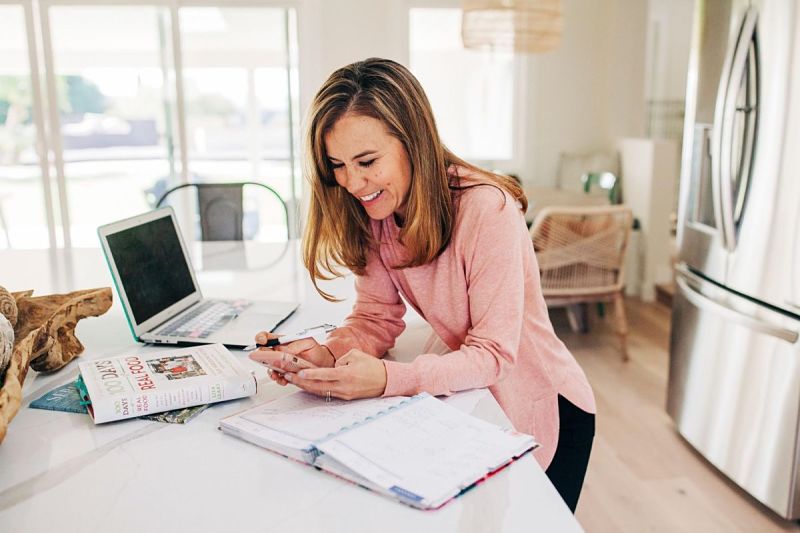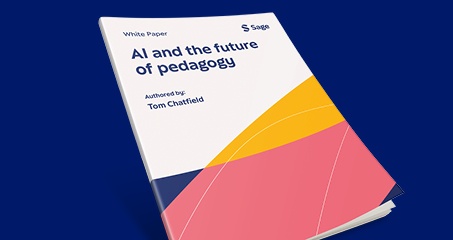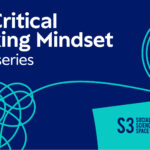Five Tips for Designing Remote or Asynchronous Learning

While real-time class time is often most familiar and preferred, it’s not always realistic given home circumstances. Rather than thinking about learning as something that always has to happen together in a classroom or even “together” online, virtual learning provides us with a wonderful opportunity to rethink personalized learning through asynchronous teaching (translation for my friends who are new to virtual learning: asynchronous just means the learning doesn’t happen all at the same time). So here are some best practices from the K-12 milieu to consider as you create these learning experiences for your students:
1. Create a Dynamic Agenda
Just like in a classroom, we want to think about creating engaging learning experiences for students. In a virtual setting that means presenting the content to students in a variety of ways. No child (or adult for that matter) wants to sit and read instructions and lessons on a screen all day. As you design your daily lessons, think about mixing up material by using videos– you can record yourself giving instruction or directions rather than typing these out (although it’s usually a good idea to provide Sparknotes of your videos for your visual learners). You can also provide videos from reliable sources such as BrainPop or Mystery Doug to teach new content rather than simply recording a video of yourself providing a lesson. If you do need to show students something through a tutorial, you can use Screencast to record videos of your screen. Here is an example of how video can be used in a daily agenda to keep information and learning dynamic:
| Daily Dynamic Agenda Learning Module 1. Intro video message from teacher with typed lesson agenda 2. Reading (Newsela) or video from reliable source for background knowledge (BrainPop or Mystery Doug) 3. Reflection or comprehension question (typed or Flipgrid video) 4. Screencast video of teacher providing instruction 5. Practice time for student -submit to teacher for feedback |
2. Make It Interactive
Although a student is working independently in what can easily feel like a silo, their learning experience can remain interactive. It’s important in online learning that students constantly engage with the content and continue thinking critically as they work. When I design learning modules, I build in “think time” for learners to reflect and jot down ideas (Pro tip: Visible Thinking Routines are awesome for this). I also create prompts and tasks for them to apply content presented as the module moves along. Providing several “Do Nows” can help ensure that learning is progressing throughout the module, similar to layers of learning or scaffolding that you would normally build into your classroom. If a student waits until the end of watching a series of videos or reading texts to complete a task, the chances of their “spacing out” is pretty good (trust me, I watched it happen with my 3rd grader during his first week of COVID19 homeschool!).

3. Recommend Pacing
To help with time management and to keep all students to a similar timeline you should suggest (or even require) pacing for completion of modules. By doing this you can take on more of a Blended Learning approach where students can interact synchronously in between the asynchronous learning modules. During this COVID19 crisis it is becoming clear that families need a lot of flexibility with academic requirements, and general pacing at least gives them some guidelines to follow and a little bit of structure to maintain, which feels important for children right now. The table at the end of this post is an example of providing a general pacing guideline for a week of remote learning.
4. Assign Clear Deliverables
For each online learning module that you design, it’s important to keep students engaged throughout (see #2 above!), but it’s also important for students to complete a concrete deliverable.
| #realtalk: As teachers, we know that we have to provide instructions three ways, three different times in the classroom. You can double that in a virtual classroom! Because e-learning requires so much independence and agency from learners, they need to be especially clear on the task at hand. |
By providing clear instructions with clear deliverables, students of all grade levels will better manage their own progression through the module. I recommend posting the instructions and deliverable on every slide/screen that students are working through in a given module. At the conclusion of the module students should have to submit something to the teacher, so the teacher can assess for content or skill mastery. Without this submission we teachers have no way of formatively assessing, and therefore no way of knowing if students are learning.To embed best practices of formative assessment, clear deliverables will help students reflect on their learning, provide peer feedback, and receive teacher feedback — more on that next!
5. Provide midway feedback
We know that feedback is a best practice of teaching and learning, but it is especially important in virtual learning. Without the ability to peek over a student’s shoulder and see how they are doing with material you recently presented, a student can very quickly go down the wrong path, or worse yet, fall behind. As you plan your week ahead, think about building in check-points to ensure students are mastering new content you have presented in your modules. These check-points can be online quizzes in Schoology or Quizlet to check for comprehension, performance-based assignments in Flipgrid, or a Zoom or Google Hangout to talk through content and check for understanding. See below for an example of building in check-ins to your asynchronous learning agenda.
Weekly Blended Learning Model
I have learned these five lessons from my own time facilitating virtual learning, but also as a parent watching my two children have very different learning experiences over the first week of COVID-19 homeschool. By implementing these best practices, students can truly develop their independence as learners and continue to academically develop, rather than sit idly in a holding space of mandated virtual learning. IF we can rethink learning together — what it looks like to design and what it can be for the learner experience — we can truly come together to make the most of these difficult times for schooling.













![Share Your Most Surprising Policy Citation for Chance to Win $500 [Closed] Share Your Most Surprising Policy Citation for Chance to Win $500 [Closed]](https://www.socialsciencespace.com/wp-content/themes/conferpress/images/default_thumbnail-new-border.jpg)

























































































Love this article. It’s those are great tips to prepare lessons and intereaact with the students sand families.
I agree that this “new” learning is going to have to be open and allow families to adjust to a schedule that works best for their household. A lot of parents are slowly heading back to work or seeking new careers because of our current situation, so expecting all students to log in at the same time is unrealistic! We as educators have to allow flexibility to encourage students and parents to stay engauge .